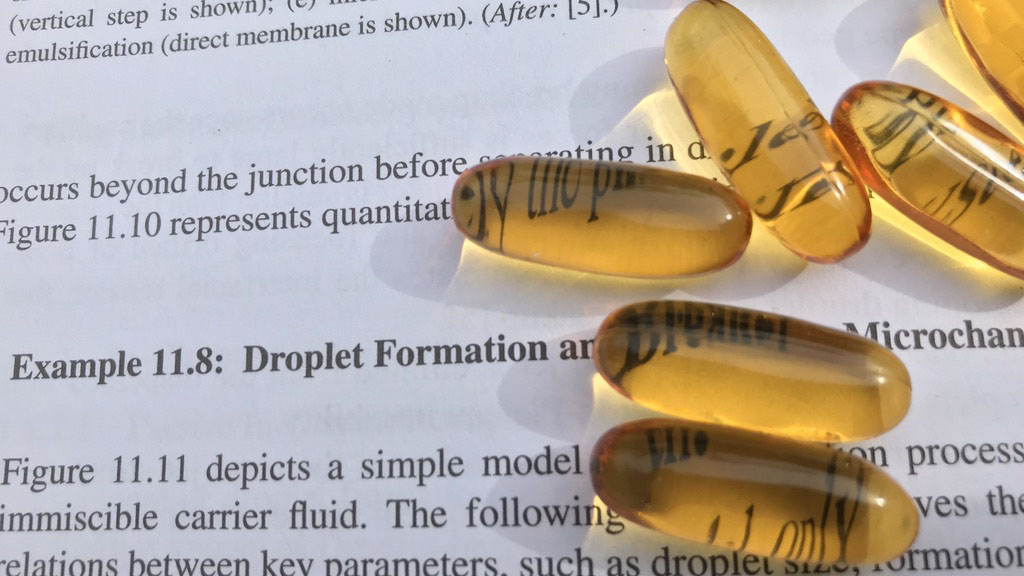Current production methods for microcapsules involve the use of emulsions, but these often require surfactants to ensure stability of the interface between the inner liquid and the one used to create the outer shell. Since surfactants can adversely affect the liquids involved, other approaches have been tried, including spraying liquids in a strong electric field.
One technique for creating microcapsules that works reasonably well involves the use of tiny channels. This microfluidics approach requires the complete wetting of the tiny channels with the liquids used to make the droplets. This, again, requires surfactants, complicating the fabrication process.
In this new method, a surfactant-free microfluidics process is used. The technique can produce up to 100 microcapsules per second. The output could be even larger at higher flow rates, according to the authors.
To produce the microcapsules, the investigators created a device by etching tiny channels into hard plastic. Two different liquids, an oily one for the core and a different one for the shell, were injected into the channels.
As the liquids are pumped through, droplets form when the immiscible liquids come into contact. The droplets are kept separate from one another with a third liquid and, finally, irradiated with ultraviolet light. This final step causes the outer shell to polymerize and solidify, trapping the liquid core.
The investigators analyzed and optimized the system by trying different flow rates and other operating conditions. The final droplets were examined and allowed to dry overnight at a high temperature, but no evaporation or shrinkage was observed, showing that the microcapsules can be safely stored without rupturing. This makes them ideal for pharmaceutical or skin care applications.
“Another application for microcapsules would be the polymerase chain reaction, PCR,” said co-author Nam-Trung Nguyen, of Griffith University in Australia.
Keeping the PCR samples in these tiny capsules allows for implementation of a technique known as digital PCR.
“Each microcapsule could serve as a single microreactor, eliminating the need for well plates,” said Nguyen.
###
The article, “Surfactant-free, UV-curable core-shell microcapsules in a hydrophilic PDMS microfluidic device,” is authored by Adrian J.T. Teo, Fariba Malekpour-galogahi, Kamalalayam Rajan Sreejith, Takayuki Takei and Nam-Trung Nguyen. The article will appear in AIP Advances on June 2, 2020 (DOI: 10.1063/5.0004736). After that date, it can be accessed at https://aip.scitation.org/doi/10.1063/5.0004736.
ABOUT THE JOURNAL
AIP Advances is an open access journal publishing in all areas of physical sciences—applied, theoretical, and experimental. The inclusive scope of AIP Advances makes it an essential outlet for scientists across the physical sciences. See https://aip.scitation.org/journal/adv.
###
Original post https://alertarticles.info


